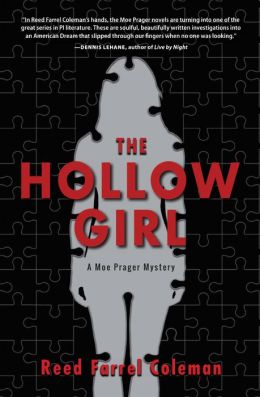In Reed Farrel Coleman’s ninth Moe Prager mystery, a blogger known as the Hollow Girl vanishes, and her frantic mother hires Prager to find her. Because the Hollow Girl (real name Sloane Cantor) once faked an online suicide, the ex-cop-turned-PI is initially hesitant to take the case. But after making a few inquiries, he follows up on the real possibility that Sloane has been kidnapped by a former admirer seeking revenge for being “catfished,” or lured in by the blogger’s fake online antics. Prager finds himself uncertain what’s real and what’s fabricated, a confusion made worse by the fact that Prager—never perfect—has been drinking heavily and can hardly tell up from down.
Ever since his debut in Walking the Perfect Square, Prager has been a troubled man helping troubled people, and here the ante is upped. He finds himself mired in a slimy morass of S&M devotees, entertainment industry has-beens, and mega-wealthy Hamptonites going to seed in their garish Long Island mansions. Prager’s personal imperfections make him more Everyman than superhero, which is why he is such a sympathetic protagonist. In an environment ruled by professional liars, he holds fast to the truth, no matter the cost—and the cost here is enormous, both to Prager and Sloane.
But as grim as The Hollow Girl can get, it is leavened by bursts of dark humor. When catfisher Sloane reappears on the Internet naked, bound, bloody, and ostensibly being held for ransom, the media responds by critiquing the shocking images as performance art. Author Coleman gives us two critiques in full: the calmer one from Newsday, which wags a judgmental finger at what the newspaper sees as Sloane’s continuing manipulations; the more sympathetic critique comes from BitterArt- Bitches.com, which likens the rope binding Sloane as a symbol of “male desperation,” and Sloane’s blood as “the blood of a martyr.” Riotous stuff, to be sure.
Basically, though, The Hollow Girl is an enormously compassionate novel, one which continues to hold out hope for the most hopeless, the most wounded—and sometimes, even the most despicable. The rare ability to do that is what makes Coleman not just a good writer, but an increasingly great one.



